Blog Posts Tagged Technical Content
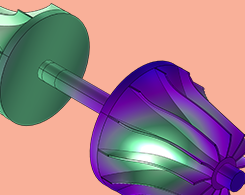
Predicting the Stability of Rotor Systems with the COMSOL® Software
Instability in a rotor system can lead to catastrophic failure. Fortunately, engineers can predict the stability of rotor systems by performing stability analyses with the Rotordynamics Module.

How to Analyze a Glacier via Gradient-Based Optimization
This post highlights a gradient-based optimization method that geophysical engineers can use to analyze, for instance, the movement and sensitivity of a glacier.

Optimizing Thermal Processes in Carbon Manufacturing with Simulation
A guest blogger from SGL Carbon GmbH demonstrates how his organization uses heat transfer simulation to optimize thermal processes in carbon manufacturing.
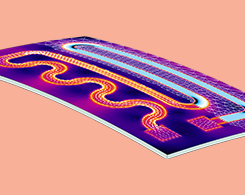
How to Provide Structural Stability in Thermal Expansion Simulations
Say you want to compute thermal expansion and stresses in an object, but you don’t know what constraints you need. That’s where the Rigid Motion Suppression feature comes in.

The Nonparaxial Gaussian Beam Formula for Simulating Wave Optics
Here’s your introduction to the nonparaxial gaussian beam formula, which is used for simulating wave optics problems in COMSOL Multiphysics®.
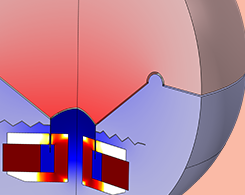
How to Perform a Nonlinear Distortion Analysis of a Loudspeaker Driver
For a thorough and complete analysis of a loudspeaker driver design, acoustics engineers need to perform nonlinear time-domain studies in addition to frequency-domain studies.
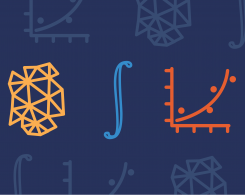
Your Guide to Meshing Techniques for Efficient CFD Modeling
Learn how to use a variety of meshing tools for your CFD analyses, including mapped mesh, unstructured quad mesh, triangular mesh, tetrahedral mesh, swept mesh, boundary layer mesh, and more.

How to Use the Cluster Sweep Node in COMSOL Multiphysics®
Keep your cluster admin happy by using the Cluster Sweep node in COMSOL Multiphysics® to optimize the parallelization of parametric computations on clusters.

How to Set Up a Mesh in COMSOL Multiphysics® for CFD Analyses
As a flow mechanics specialist preparing a mesh for CFD analysis, the geometry supplied by a CAD team is often exactly what you do not want. So, what do you do?

How to Create Animations Along the Azimuthal Direction for 3D Models
Here’s a useful postprocessing trick for presenting your 3D modeling results: combine slice plots along the azimuthal direction in order to generate a nontrivial animation.
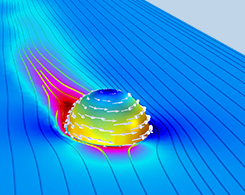
Terminal Velocity, Drag Coefficients, and FIFA World Cup™ Predictions
Is it possible to predict the winners of the FIFA World Cup™? We forgo consulting a psychic and instead analyze the terminal velocity and drag coefficients of different balls with CFD simulation.
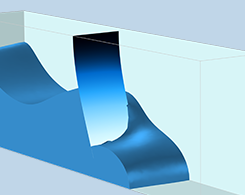
Modeling Free Surfaces in COMSOL Multiphysics® with Moving Mesh
You can model free liquid surfaces that do not undergo topology changes using moving mesh functionality in the COMSOL® software. Here’s a thorough guide on how to do so.

How to Model Conductors in Time-Varying Magnetic Fields
You can use the AC/DC Module to perform frequency-domain simulations for conductors in time-varying magnetic fields by describing the skin effect.
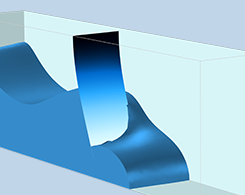
Two Methods for Modeling Free Surfaces in COMSOL Multiphysics®
We take you through 2 methods for modeling free surfaces in the COMSOL® software: the level set and phase field methods. Learn how to use each method and their benefits.

How to Solve a Classic CFD Benchmark: The Lid-Driven Cavity Problem
We demonstrate how to solve a classic benchmark problem in the field of computational fluid dynamics, the lid-driven cavity problem, using the COMSOL® software.
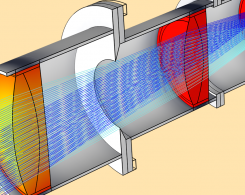
How to Create Complex Lens Geometries for Ray Optics Simulations
Learn how to set up the model geometry for a complex lens system in a way that ensures an effective and successful ray optics simulation.
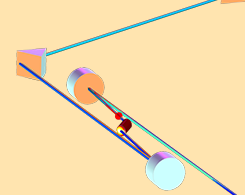
Ray Optics Simulation of Sagnac Interferometers and Ring Laser Gyros
Have you ever been in a revolving restaurant that slowly spins as you dine? This same concept can be used to understand the operating principles of Sagnac interferometers and ring laser gyros.
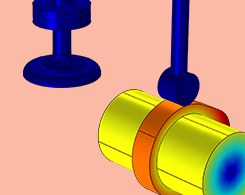
How to Model a Cam-Follower Mechanism
Watch a series of animations that show the different types of cam-follower mechanisms before learning how to model them in COMSOL Multiphysics®.

Common Pitfalls in Electrothermal Analysis
In the real world, electromagnetic heating often involves a nonlinear temperature. Learn some common pitfalls that occur during this type of electrothermal analysis and how to overcome them.
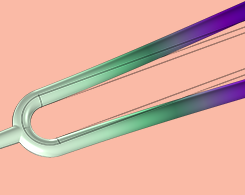
Finding Answers to the Tuning Fork Mystery with Simulation
If you strike a tuning fork and hold it against a tabletop, the peak frequency of the emitted sound doubles. Is there a physical explanation for this “tuning fork mystery”?

Multiphysics Modeling of Stress Corrosion in Underground Pipelines
Stress corrosion is a phenomenon that causes degradation in underground pipelines. Learn how to use multiphysics modeling to understand and predict its occurrence.

How to Model Linear and Nonlinear Optics in the COMSOL® Software
See how to model the Kerr effect, and other linear and nonlinear optical phenomena, using the Wave Optics Module and COMSOL Multiphysics®.
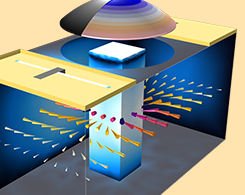
High-Fidelity Modeling of a Tunable Filter via Multiphysics Simulation
Tunable cavity filters can enhance the development of high-speed, wireless communication networks. To optimize these devices for such a purpose, we can turn to high-fidelity modeling.

How to Perform Multimaterial Optimization in COMSOL Multiphysics®
Does a tuning fork sound better when made out of aluminum instead of copper or steel? In COMSOL Multiphysics®, you can perform an optimization study for multiple materials to find out.
